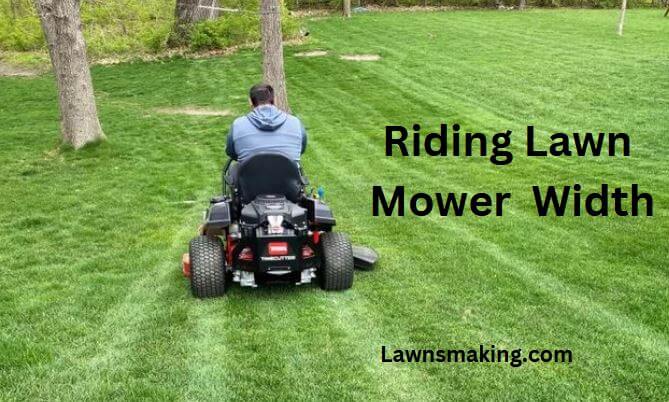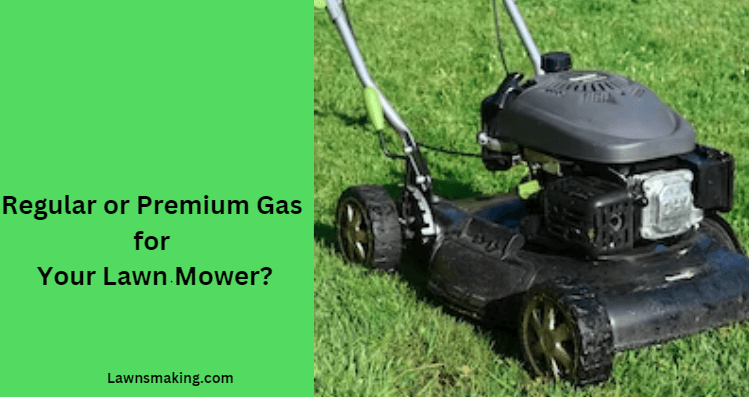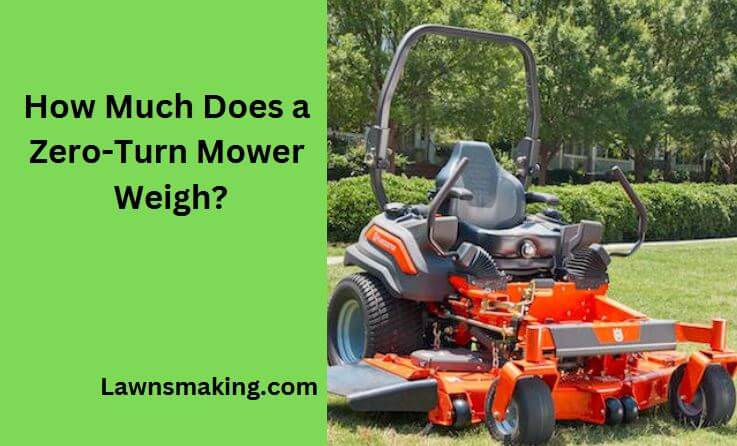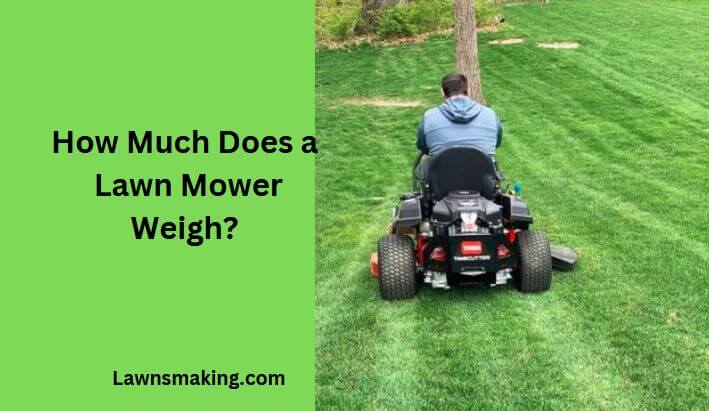
Once you have a pacemaker placed under your skin, vigorous activities become a no-go zone, especially if you have not healed well. As a dedicated landscaping hobbyist, you want to get rolling with mowing to keep your turf groomed, soon as you get well. However, you may wonder, “Can you use a lawn mower with a pacemaker?”
Although you can use a lawn mower with a pacemaker, plenty of precautions should be observed. For example, maintain a safe distance of At least 12 inches (30.48 cm) from the mower while using it. Mowers have motors large enough to cause electromagnetic interference to the pacemaker – which is why the distance is vital.
If you have concerns about using a lawn mower with a pacemaker, read this article to get concise answers to all your doubts. Stay tuned.
5 Things to Consider Before Using a Lawn Mower With a Pacemaker
Safety is paramount when using a lawn mower after having a pacemaker implant. Here are five crucial factors to consider before you use the mower with a pacemaker:
1. Consider Your Doctor’s Recommendations
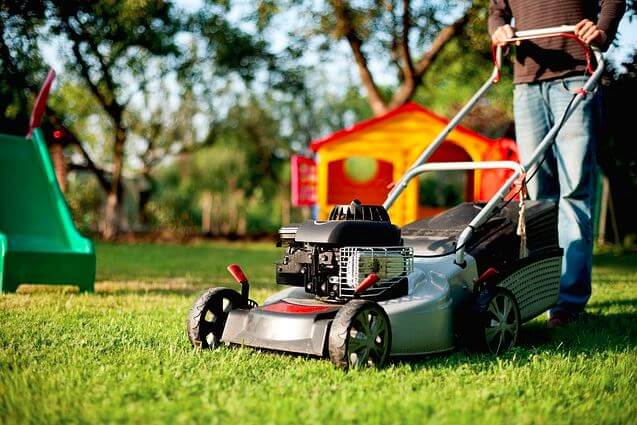
The first step, even before you think about using a mower, is to consult your doctor. The doctor will perform a series of checks on your heart condition and its stability to handle vigorous activities and provide guidance.
Once the doctor gets your heart condition’s picture, they will advise whether or not you can engage in mowing using a lawn mower. The doctor might instruct you to wait for some time, depending on your wound’s state.
In some cases, the cardiologist will not recommend you use a lawn mower, seeing the fragile state of your heart. In that regard, make sure to follow your doctor’s recommendations.
3. Maintain a Safe Distance While Mowing
You shouldn’t follow the mower too closely even if the doctor gives you the go-ahead to use the equipment. In fact, you’ll receive a set of instructions and precautions even after being cleared to use the lawn mower, and safe mowing distance is among them.
Ideally, keep the pacemaker at least 12 inches (30.48 cm) from the mower. This reduces electromagnetic interference, thus maintaining the proper functioning of the pacemaker.
When you get the pacemaker too close to any machinery, including the mower, the device may not function well, thanks to the influence of electromagnetic interference.
That said, one of the best ways to achieve such a distance is by pushing the mower using the dominant hand that doesn’t house the pacemaker. Of course, slightly standing to the side of the equipment as you mow can help maintain a safe distance.
3. Choose the Right Type of the Mower to Use
There are several mower types, but not all are safe for people with pacemakers in their bodies. For example, there’s the push or walk-behind mower and the riding lawn mower.
Generally, consider a push mower because it provides the required safe mowing distance. In addition, a push mower doesn’t generate high levels of electromagnetic interference that could disrupt your pacemaker’s normal functions.
Similarly, battery-powered mowers may be a great option compared to gasoline-powered ones. They produce fewer electromagnetic emissions, ensuring your safety all day.
4. Consider Protective Gear Before Operating a Mower
Before you undertake mowing, have you set aside the correct gear for enhanced safety during the operation? Accidents happen, and the last thing you wish to see is a mishap that eventually interferes with the pacemaker.
To that effect, wear protective clothing, hearing protection, eye protection, and sturdy footwear. These reduce the risk of accidents, improving your safety and providing maximum protection for the pacemaker.
5. Listen to Your Body First
You don’t want to force yourself to the mower if you can feel some pain. The bottom line is that if the mower makes you uncomfortable using it, stop the mowing. That’s a sign that the machine is causing physical exertion to your body and the pacemaker.
Don’t bank on the doctor’s recommendations and forget about how you feel. Make sure you are not experiencing some health challenges while using the mower.
Therefore, a top-healthy body will allow for the safe use of a mower.
4 Best Alternatives for Mowing With a Pacemaker

Some people cannot just risk pushing a lawn mower once a pacemaker becomes part of their everyday lives. You can understand why.
If you are one of them and are looking for alternatives to traditional lawnmowing where no lawnmowers are involved, here are the four best options to pick on.
Professional Lawncare Services
The best bet, of course, is the professional lawn care services you can make use of. Consider hiring a landscaping agency to do the job for you.
These services can handle anything regarding lawn management. Think of mowing, trimming, and general lawn care – they can do all you want to ensure your turf is well maintained.
When you engage such professionals, you have all the time to rest and never get near a mower. The only downside to this option is the hefty costs it comes with. But if you have it already in the budget, that’s not going to create problems for you.
Consider Using Family Assistance
If you have a family, another member besides you can do the mowing. This gives you the opportunity to stay away from the mower and keep your pacemaker safe.
Family assistance is very effective, affordable, and practical. You don’t incur expenses, as in the case of hiring a professional lawn care service.
So, with family available, your lawn remains well-kept as you stay risk-free from lawnmower operations.
Try Different Landscaping Methods
You can try landscaping methods like xeriscaping – which is the use of rocks, gravel, or drought-resistant plants as ground cover.
The small rocks and gravel form a cover that’s not only good at weed suppression and moisture retention but also attractive and low-maintenance. This technique eliminates lawnmowing needs.
Furthermore, you can also do ground cover plants like clover and creeping thyme. Overall, these plants require less maintenance. Yet, they give your lawn a great look.
Use Artificial Turf
If you don’t mind something that’s not natural but keeps you off the lawnmower risks, artificial turf is the perfect alternative. Still, you enjoy the green surface of the natural grass but with little or no maintenance.
Once the turf is installed, it will save landscapers with a pacemaker lots of money. Caring for the artificial grass is a cinch and cost-less.
How to Use a Ride-On Lawn Mower With a Pacemaker
You can use a ride-on lawn mower with a pacemaker as long as necessary precautions are considered. Here are the procedures on how to use this equipment;
- Consult With Your Cardiologist: Generally, it’s risky to use machinery while having a pacemaker, thanks to electromagnetic interference issues.
Consulting your doctor gives you precise insights into how you should operate the machine if you’re cleared to use it. The doctor should tell whether it’s safe to ride the mower.
- Stick to the manufacturer’s instructions: You should consider the instructions provided by the manufacturer in the user manual. Follow them diligently to ensure safe operation.
Remember to wear protective gear, safety glasses, and hearing protection to remain safe.
- Make sure the mower is functioning well: It’s essential to inspect your lawnmower to ascertain that everything is good to go. Perform a thorough inspection of the engine and check for loose or damaged parts.
You want to know if the brakes, steering, and other controls are working perfectly.
- Mow the lawn at the right time: Considering factors like weather and your energy levels, you need to mow the lawn at the right time. You should avoid extreme heat or cold.
- Have someone come with you: Given your condition, make sure you have a person coming with you just in case you need help during the process.
Something may happen, and the person will be there to help.
- Ride the mower smoothly: To reduce exerting too much pressure on your heart, move the mower carefully and smoothly. You should not engage in sudden turns that may stress your heart and affect the pacemaker.
- Pay close attention to your body: If you feel uncomfortable riding on the mower, you should stop the whole thing. Seek medical attention immediately if you start experiencing symptoms such as dizziness, lightheadedness, chest discomfort, and irregular heartbeats.
- Take breaks when necessary: You should take regular breaks as you mow. Your body needs the rest as overexertion can lead to health problems.
Can I Mow the Lawn With a Pacemaker?
You can mow the lawn with a pacemaker so long as you take the necessary precautions to stay safe. Maintaining a safe distance between the pacemaker and the mower is vital. It reduces the chances of electromagnetic interference.
As mentioned earlier, seeking your doctor’s advice will go a long way to help you do the right thing. Once you are cleared to operate the mower, remember to follow all instructions provided by the manufacturer to stay safe.
In addition, don’t forget to monitor your health closely, as you don’t want to hurt your body. In a nutshell, do all the important checks required to ensure you’re good to go.
Can You Cut Grass With a Defibrillator?
You can cut grass with a defibrillator if all precautions are followed well to the latter. Otherwise, according to expert reports, electronic interference can cause inappropriate discharge of the device, leading to serious heart problems.
Follow these steps when cutting grass with a defibrillator implanted in you:
- Consult with your healthcare provider to see whether you can do such physical activities as mowing.
- Stick to the guidelines provided by the healthcare provider
- Keep checking on your heart rate while mowing, and look out for symptoms like shortness of breath.
- Take breaks in between mowing.
So, Can You Use a Lawn Mower With a Pacemaker?
While you can use a lawnmower with a pacemaker, it’s important to maintain a safe distance of approximately 12 inches (30.48 cm). You don’t want to expose the pacemaker to electromagnetic interference.
Moreover, you should always consult your doctor before using a lawnmower with a pacemaker.
